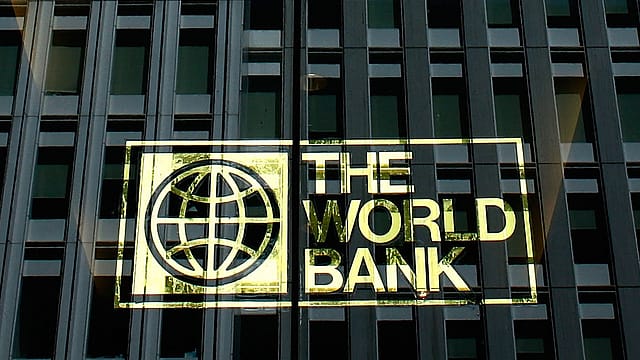World Bank expects India to remain fastest-growing major economy in FY24
ADVERTISEMENT

India will remain the fastest-growing economy in terms of both aggregate and per capita GDP of the largest emerging market and developing economies, according to the World Bank.
The global financial institution retained its April forecast for India's GDP growth at 6.3% for the financial year 2023-24, a 0.3 percentage point downward revision from January.
"This slowdown is attributed to private consumption being constrained by high inflation and rising borrowing costs, while government consumption is impacted by fiscal consolidation," the World Bank says in its flagship Global Economic Prospects report.
Growth is projected to pick up slightly through FY25-26 as inflation moves back toward the midpoint of the tolerance range and reforms payoff, it says. The World Bank expects India's GDP to grow at 6.4% in FY25 and 6.5% in FY26.
In India, which accounts for three-quarters of output in the South Asia region, growth in early 2023 remained below what it achieved in the decade before the pandemic as higher prices and rising borrowing costs weighed on private consumption, the report says.
"However, manufacturing rebounded into 2023 after contracting in the second half of 2022, and investment growth remained buoyant as the government ramped up capital expenditure. Private investment was also likely boosted by increasing corporate profits. Unemployment declined to 6.8 percent in the first quarter of 2023, the lowest since the onset of the COVID-19 pandemic, and labor force participation increased. India's headline consumer price inflation has returned to within the central bank's 2-6 percent tolerance band," it adds.
January 2026
Netflix, which has been in India for a decade, has successfully struck a balance between high-class premium content and pricing that attracts a range of customers. Find out how the U.S. streaming giant evolved in India, plus an exclusive interview with CEO Ted Sarandos. Also read about the Best Investments for 2026, and how rising growth and easing inflation will come in handy for finance minister Nirmala Sitharaman as she prepares Budget 2026.
Growth in South Asia is expected to slow marginally in 2023, to 5.9%, and more significantly in 2024, to 5.1%, says the World Bank. Unexpected resilience in private consumption and investment, and robust growth in the services sector in India, underlie an upward revision to growth in 2023, it says.
The lagged impact of tightening domestic policy and global financial conditions, and the aftermath of crises and natural disasters in several economies, are expected to temper growth in 2024, cautions the World Bank.
Global growth is projected to slow significantly in the second half of this year, with weakness continuing in 2024. The World Bank's latest projections indicate that the world economy will remain frail—and at risk of a deeper downturn—this year and in 2024. Its baseline scenario calls for global growth to slow from 3.1% in 2022 to 2.1% in 2023, before inching up to 2.4% in 2024. Even this tepid growth assumes that stress in the banking sector of advanced economies does not spill over to EMDEs.
"Recent banking sector stress in advanced economies will also likely dampen activity through more restrictive credit conditions. The possibility of more widespread bank turmoil and tighter monetary policy could result in even weaker global growth," warns the World Bank, adding that inflation pressures and tight monetary policy is expected to weigh substantially on activity.
